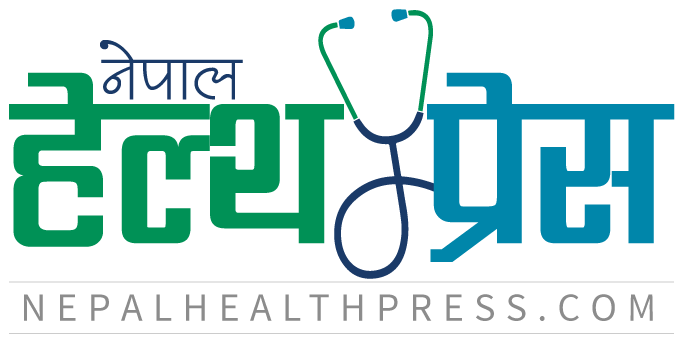Lead Us Not Into Poison: Protecting Our Future from Lead Poisoning

According to the World Health Organization (WHO), over 1.5 million deaths occurred globally in 2021 attributed to a certain disease – and no, it’s not COVID-19. So, what is this “mystery” disease causing such a significant loss of life?
Many of us grew up using pencils, commonly referred to as “lead pencils.” However, contrary to popular belief, there is no lead in these pencils. Instead, they contain graphite, a non-toxic material. But why not use lead? Hypothetically speaking, if pencils were made of lead, they would be extremely dangerous to use. Lead is a naturally occurring toxic heavy metal that, even in small amounts, can cause serious health issues when ingested, putting people at risk of lead poisoning. And with that, the question we started with is answered.
So, it’s lead poisoning that is responsible for claiming an alarming number of lives each year. But why is lead so dangerous to humans? If you remember your chemistry lessons, you’ll know that lead is a heavy metal with an atomic number of 82.
Why does this matter? Simply put, heavy metals like lead bind to parts of your cells, disrupting their functions and preventing your organs from working as they should.
The danger grows when lead builds up in the body over time, often unnoticed for months or even years. Even small amounts can have severe consequences, especially for young children under the age of six. Their developing bodies and brains are particularly vulnerable, with lead poisoning potentially causing irreversible damage to their mental and physical development.
In extreme cases, the accumulation of lead can even be fatal. The silent nature of this toxic metal makes it all the more insidious, posing a widespread yet underestimated public health risk.
As a result, it is a serious and often overlooked public health issue that can affect both children and adults. Initially, it can be difficult to detect, as symptoms may not appear until dangerous levels of lead have accumulated in the body. Even seemingly healthy individuals can have high blood lead levels without any obvious signs.
Symptoms in Children: Children are particularly vulnerable to lead poisoning, and its effects can be devastating. Common signs include developmental delays, learning difficulties, irritability, loss of appetite and weight loss, sluggishness and fatigue, abdominal pain and vomiting, constipation, hearing loss, seizures, and engaging in pica (the act of eating or having a strong desire to eat non-food items, such as chalk or hair). Moreover, babies exposed to lead in utero may face additional risks, such as premature birth, low birth weight, and slowed growth.
Symptoms in Adults: While children are at higher risk, adults can also suffer from lead poisoning, which presents with a different set of symptoms, including high blood pressure, joint and muscle pain, memory and concentration difficulties, headaches, abdominal pain, mood disorders, and reproductive issues, such as reduced sperm count and complications during pregnancy, including miscarriage or stillbirth.
Now that we understand the symptoms, let’s explore the sources of lead exposure. Surprisingly, this toxic substance is all around you. It can be found in various places, from the home you live in to the water you drink.
Found in various products and environments, some potential sources of lead exposure, which can contribute to lead poisoning with prolonged contact, include paint (found in older homes, antique toys, furniture, and crafts), dust, soil, drinking water, air, traditional medicines, Ayurvedic remedies, cosmetics, children’s jewelry and toys, workplace environments and hobbies, lead-glazed ceramics, canned food items, and other common sources like car batteries, radiators, and certain inks.
Now that we have a clear understanding of lead exposure, let’s take a look at how our country compares globally. You might be surprised to learn that, according to the Environmental Performance Index (EPI), Nepal has an EPI score of 27.2.
This score is based on the “DALY rate,” which measures lead exposure by calculating the number of age-standardized disability-adjusted life-years (DALYs) lost per 100,000 people due to lead contamination in the environment. A score of 100 indicates a country with one of the lowest DALY rates globally, such as Denmark, Finland and Japan, which all have an EPI score of 100. In contrast, Nepal ranks 166th out of 180 countries in terms of lead exposure, placing it even lower than Sub-Saharan African countries like Niger and Chad, which have a comparatively lower GDP per capita and standard of living.
Highlighting Nepal’s position on the global stage, national studies backed by the World Health Organization (WHO) Country Office for Nepal and other organizations have underscored the substantial risk of high lead exposure among children, particularly in regions such as Kathmandu, Birgunj, and the Dharan-Dhankuta industrial corridor. A 2020 global study by UNICEF and Pure Earth also estimated that more than 65% of Nepal’s child population has elevated blood lead levels (BLLs).
According to a New York University research paper, released in 2013, the annual losses in Nepal due to lead exposure-induced IQ losses among Nepalese children are estimated at $1.5 billion (4% of the annual GDP of Nepal for the year 2011).
From the above data, you must have realized how adversely affected Nepalese children are from lead exposure. According to the WHO, infants and young children, who crawl or walk close to the ground, are more likely to ingest dust and frequently put their hands in their mouths. This behavior increases their exposure to lead, which is often found in the air, water, and soil. Young children absorb lead four to five times more efficiently than adults.
Acute lead poisoning can lead to multiple organ dysfunction mainly kidney, liver, heart, lungs, and most importantly, the brain. Chronic exposure, which is common, can be equally harmful, as neurological effects of childhood are irreversible and persist throughout life.
Additionally, even unborn children are at risk when their mothers are exposed to lead during pregnancy. Lead absorption is particularly high in children who have deficiencies in essential nutrients such as iron and calcium.
Lead mimics these essential minerals, making it easy for lead to accumulate in bones, teeth, and blood, leading to anemia and further complications in the kidneys, liver, and other organs. Most critically, lead acts as a neurotoxin, hindering mental development and academic performance.
“There is no such thing as a ‘safe limit’ of blood lead level (BLL) in children. In Nepal, with the high content of lead in paints, the situation remains grim. If timely action is not taken, the country’s future citizens may not grow up to their full potential,” states Dr. Rajesh Sambhajirao Pandav, WHO Representative to Nepal.
Lead paint is a major source of lead exposure globally. WHO and UNEP lead the Global Alliance to Eliminate Lead Paint. It aims to encourage all countries to develop legally binding laws to control the use of lead in paint. As of January 2024, 48% of countries have legally binding controls on lead paint, including Nepal.
According to the established standard, the maximum allowable lead content in paints should be 90 ppm (parts per million). Manufacturers must label paints with the exact amount of lead present and include precautionary messages to prevent occupational exposure.
To facilitate the effective implementation of the mandatory lead paint standard, the Center for Public Health and Environmental Development (CEPHED), in collaboration with the European Union and the International POPs Elimination Network (IPEN), launched the ‘Asia Lead Paint Elimination Project’ in Nepal and seven other Asian countries. They gathered 87 paint samples from 35 brands manufactured by 27 paint companies in various cities across Nepal, including Kathmandu, Lalitpur, Banepa, Biratnagar, Birgunj, Butwal, and Pokhara.
These samples were tested in world-class laboratories in Spain and Italy. The results showed that 89 percent of the samples exceeded the Government of Nepal’s standard of 90 ppm for lead content. Furthermore, 44 percent of the samples contained lead levels higher than 10,000 ppm, with the highest concentration detected being 124,000 ppm—approximately 1,378 times the Nepal standard of 90 ppm!
To prevent lead poisoning at a personal level, it is essential to adopt several key practices. First, wash your hands frequently, particularly before eating, after playing outside, and before bedtime. Keeping toys and other objects that children may put in their mouths clean is also crucial. A diet rich in iron, calcium, and vitamin C can help reduce lead absorption in the body, making these nutrients particularly important for overall health.
Maintaining a clean and dust-free home is another vital measure. Clean floors, ledges, window sills, and other flat surfaces with a damp cloth at least once a week to remove any potential lead dust. Additionally, regularly check for peeling paint and address any issues promptly, especially in homes that may contain paints with lead content above the acceptable standard.
It is also important to avoid burning waste oil, colored newsprint, battery casings, or wood coated with lead paint in or near your home, as this can release harmful lead particles into the environment. If you have concerns about exposure to lead, consult your doctor, and have your blood lead levels checked regularly to ensure your health and safety.
In conclusion, this article seeks to raise awareness in line with the twelfth International Lead Poisoning Prevention Week (ILPPW), scheduled for October 20-26, 2024. This year’s campaign, “Bright Futures Begin Lead Free,” underscores the urgent need for action from governments, civil society organizations, health partners, and industry to address the unacceptable risks of lead exposure and safeguard children’s health.
Overall, the initiative aims to spotlight the health effects of lead exposure while showcasing the efforts of countries and partners to prevent childhood lead exposure and expedite the elimination of lead in paint.
Despite widespread recognition of lead’s harmful effects and the actions taken by many countries, exposure to lead—especially in children—remains a significant concern for healthcare providers and public health officials worldwide.
We hope you are now more informed than you were a few minutes ago and that this important information empowers you to protect yourself and your loved ones from lead exposure.










प्रतिक्रिया दिनुहोस